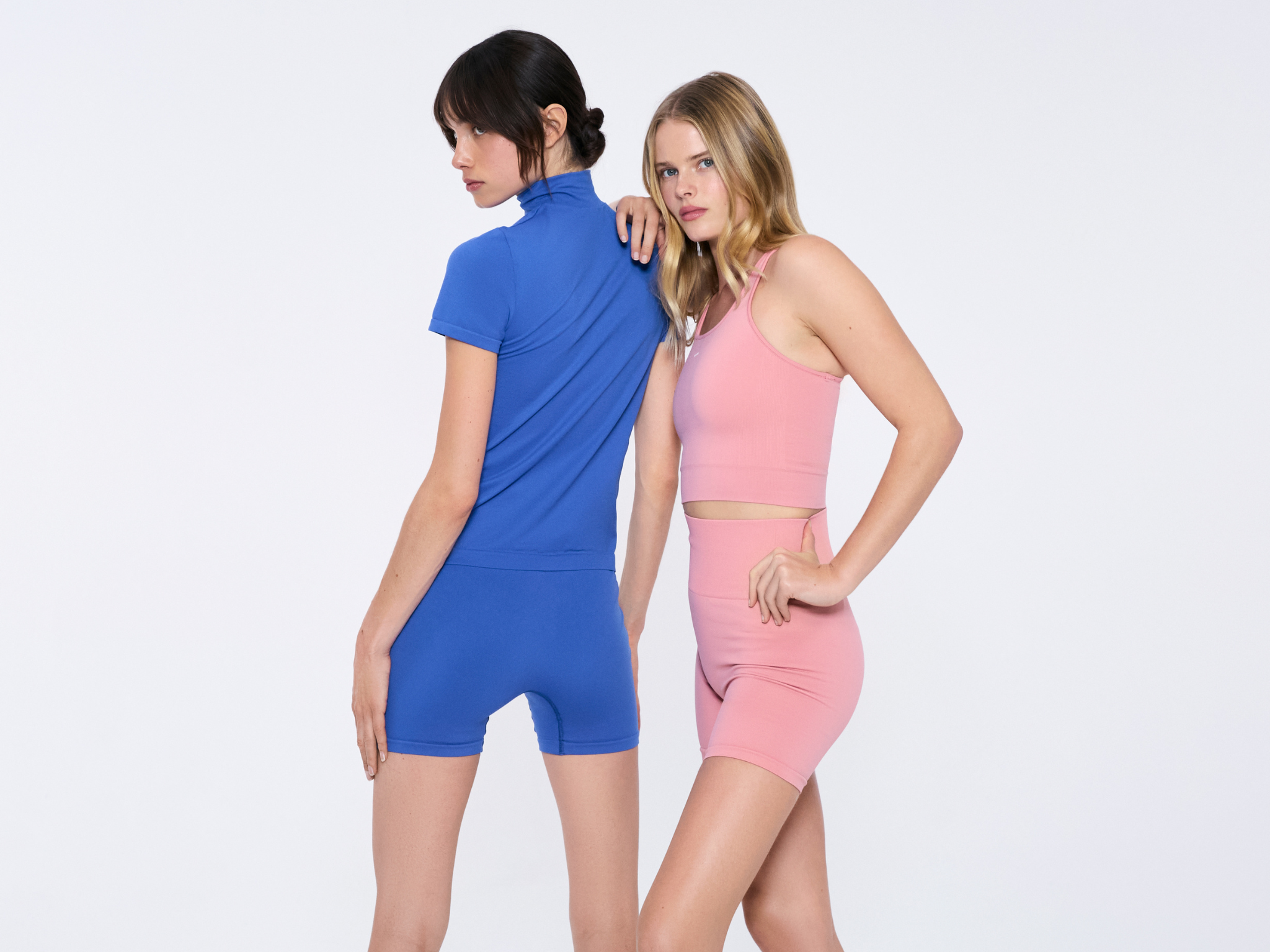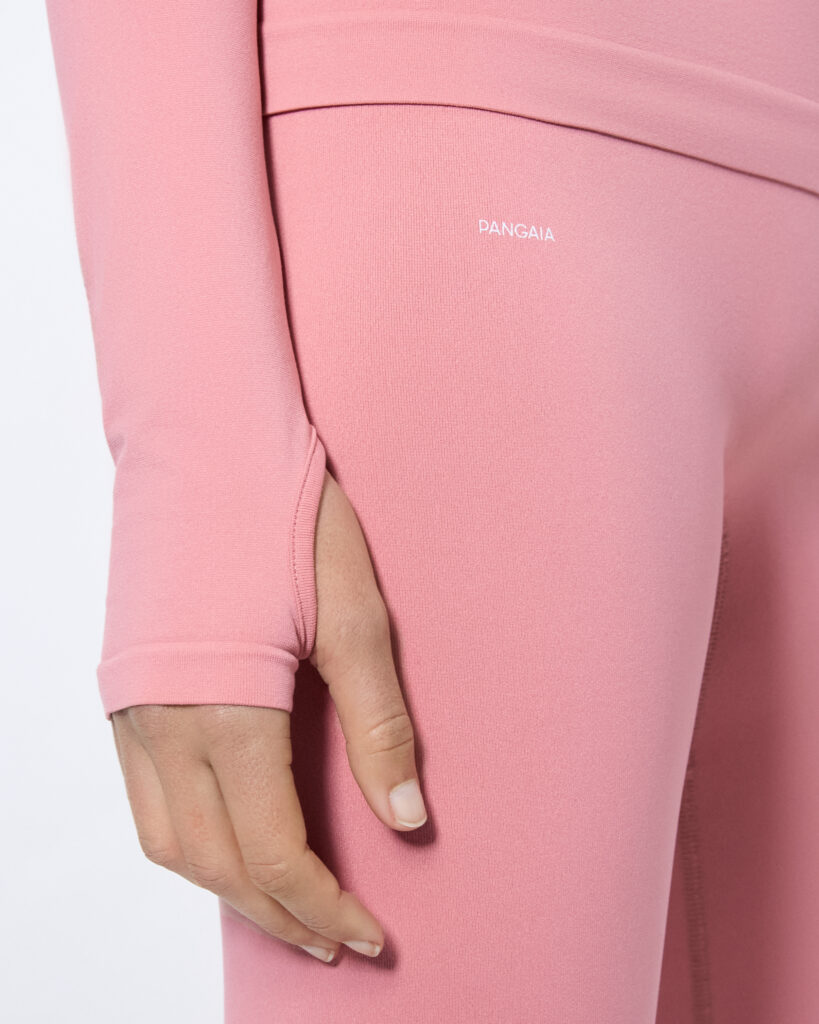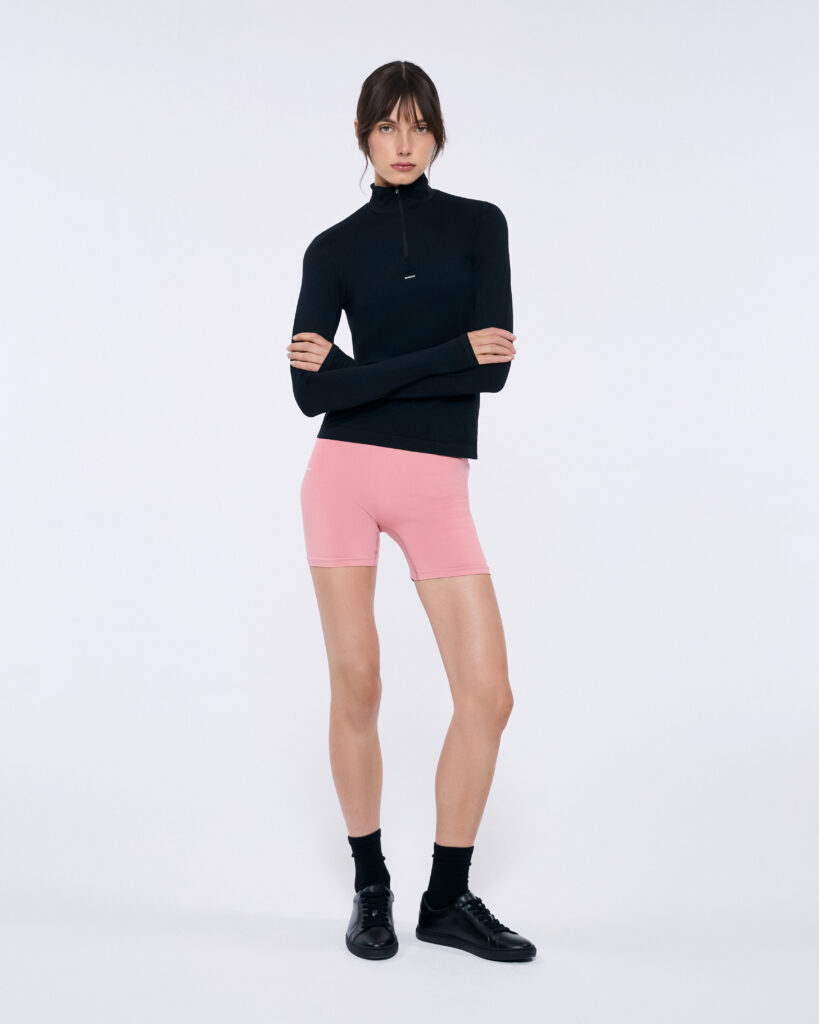
British material science company Pangaia has debuted 365 Seamless Activewear, a five-piece collection featuring bio-based nylon and an elastane alternative with 98% renewable resources.
To reduce the clothing industry’s reliance on fossil fuels, eco fashion firm Pangaia has teamed up with two sustainable material makers for its latest collection.
The London-based company has introduced what it claims is its “most advanced” sportswear collection to date. Titled 365 Seamless Activewear, it combines a 100% bio-based nylon alternative with an elastane innovation that delivers significant sustainability wins over conventional spandex.
Each of the five pieces is finished with PPRMINT, Pangaia’s peppermint-oil-based odour-control treatment that keeps garments fresher for longer and reduces the need for frequent washing. The collection features three hues – Black, Gaia Blue, and Dewy Rose – that are meant to “evoke the purity of Earth, sky, and bloom”.
Combining bio-based nylon with (mostly) petroleum-free elastane

The base of Pangaia’s latest activewear collection is Evo, a 100% bio-based polyamide made by Italian textile company Fulgar. The material is made from renewable raw materials, including castor beans – a resilient, non-GMO crop that requires minimal water, thrives in dry conditions, and doesn’t compete with food crops – and industrial corn.
It is lighter than polyester, dries faster than conventional nylon, and is described as thermoregulating, breathable, and non-toxic. Producing Evo is a lower-impact process that cuts emissions by 25% compared to conventional polyamide, according to an ISO-certified life-cycle assessment (LCA).
Evo has been blended with Regen Bio Max, a stretch fibre created by South Korean conglomerate Hyosung. It is made with a polymer composed of 98% renewable resources, including corn-based feedstock, replacing almost all fossil fuel inputs while maintaining elasticity, recovery, and durability.
Pangaia is the first brand to incorporate Regen Bio Max elastane into a commercial activewear range, highlighting third-party data and independent LCAs that suggest the material has a 27% lower carbon footprint than conventional spandex and is linked to 82% less ozone depletion.
“While conventional performance wear relies heavily on virgin polyester, nylon, and elastane, this collection is built using bio-based fibres designed to reduce dependence on fossil fuels,” Pangaia said in a press release.
In April, the firm used Evo in a sportswear capsule collection called (gaia)PLNT Nylon, although not all aspects of the collection’s garments were degradable, as the zippers were made from recycled PET tape.
Plastic fibres are bad, but bio-based alternatives need transparency too

Nylon and elastane were both invented by US chemical company DuPont in the mid-20th century. The former is known for its durability, flexibility and strength, while the latter offers exceptional stretchability and recovery, making them popular choices in activewear innovations.
However, both come with some major environmental red flags: they are plastics, which means they are derived from fossil fuels. Nylon is not biodegradable, and even with proper disposal (which is rarely the case), it can cause microplastic pollution and contaminate the waterways as the microfibres are often too small to be captured by many water treatment systems.
Producing nylon requires large amounts of water to cool down fibres and support the chemical reactions that turn them into cloth, while the energy-intensive process generates nitrous oxide, a greenhouse gas over 300 times more potent than CO2.
Elastane – also called Lycra or spandex – is primarily made from polyurethane, another fossil-fuel-based plastic. Making this non-degradable material is an energy-intensive, highly polluting production process. Even tiny amounts of elastane make a fabric incompatible with most recycling machines.
Hyosung’s Regen Bio Max still contains fossil fuel inputs, even if it has reduced their share from 70% to just 2%, which casts a cloud over its end-of-life credentials. Meanwhile, research shows that certain bioplastics can be just as toxic as petroleum-derived ones, primarily due to the chemical manufacturing process and additives required to produce them.
Although the researchers looked at packaging materials, and castor bean fibres weren’t included, it serves as a reminder that even bioplastics need to be tested and regulated for consumer safety and environmental transparency.
Several innovative apparel and fashion brands have come up with lower-impact alternatives to commonly used plastics in recent years. Eco materials firm Genomatica converts renewable carbon into the precursor to nylon, resulting in fermentation-derived nylon pellets and yarn. This innovation was used in a t-shirt line by activewear giant Lululemon in 2021, which cut emissions by 50% compared to conventional nylon.
And last year, Scottish fashion designer Patrick Grant’s Community Clothing brand launched a plastic-free Organic Athletic sportswear line. Made from woven or knitted certified organic cotton and natural Austrian woven rubber, the range can be shredded and added to your compost heap, fully decomposing within a week to five months.
The post Pangaia Debuts Activewear Collection with Bio-Based Nylon & Mostly Fossil-Free Elastane appeared first on Green Queen.
This post was originally published on Green Queen.